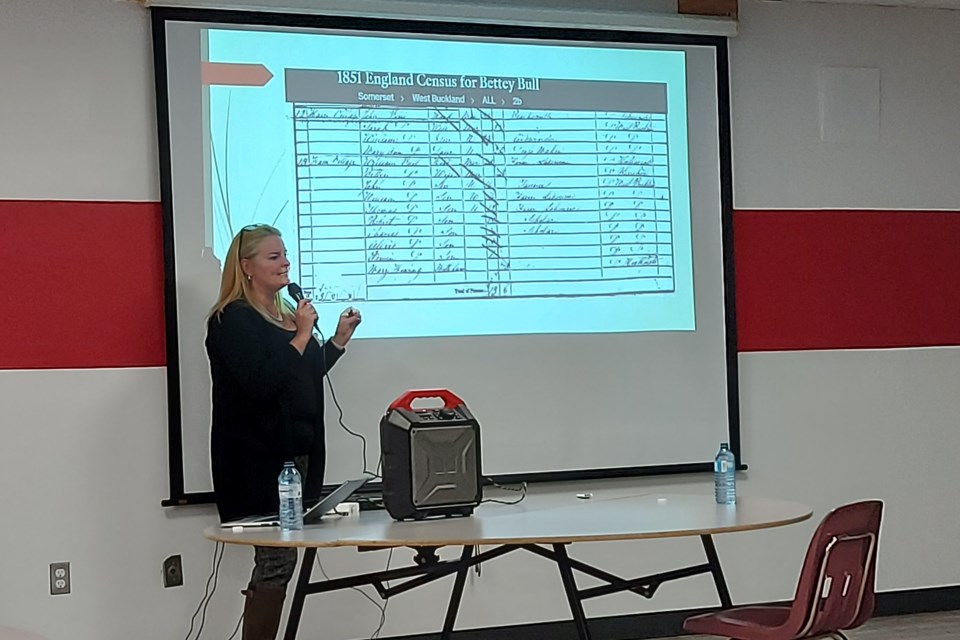Historical Society members were treated to a special presentation at the Elliot Lake Secondary School on Jan. 17 by Nancy Ewan, society treasurer-secretary, on how to use Ancestry.ca, a website for genealogy work.
Ewan, who has acted as a genealogy consultant for more than 500 families, showed the 30 members attending how to research distant relatives using the Canadian Censuses listed on Ancestry.ca, which is available to the public with a paid subscription.
Using an overhead screen, Ewan showed a listing of Canadian Censuses starting in 1825 and ranging through to the 1930s, then displayed sample pages from different censuses.
The type of information gathered in a census changes over the years.
Ewan pointed out that the Canadian Census of 1901 was the first census to list a person’s colour and racial or tribal origin. It is also the first census that included a person’s date of birth, giving the day and not just the month and year.
Ancestry.ca also shows copies of any available records provided by earlier researchers, such as when a person entered Canada, either through Montreal or Halifax, the usual entry ports for new immigrants coming by sea.
Ewan demonstrated how a person could find a relative on a census then go deeper by finding corresponding certificates of death, marriage and marriage banns, a public notice used by churches to inform their members of an upcoming marriage. A society member explained that the marriage banns would be read for three weeks, allowing church members time to inform clergy if a proposed bride or groom was ineligible for marriage for various reasons, such as already being married.
When searching for a distant relative, Ewan said Ancestry.ca allows use of a “wild card” which allows the researcher to include different spellings of a name at the same time, thereby reducing time and expense.
After the formal presentation, Ewan asked for suggestions of names of family relatives that members would like her to look up. She then went to the appropriate census, typed in the relative’s name, then pointed out all the data that could be found on that individual. The data included such things as the name of the head of the household (husband), wife, children, town or district, type of home, occupation, birth dates, and even whether or not the home had a radio.
The society, which held its first annual general meeting in November 2022, formed with the purpose of preserving and promoting “heritage, history, and culture of the region through sharing memorabilia, conversation, events, education and information,” as stated in a release.
The society is open to new members for an annual fee of $10. They meet at the Elliot Lake Secondary School cafeteria monthly. For more information contact them by email at [email protected].
